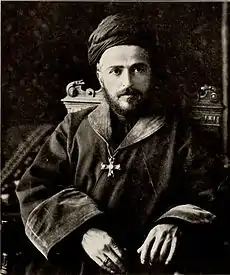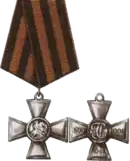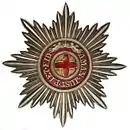Our Smallest Ally
Our Smallest Ally: a brief account of the Assyrian Nation in the Great War is a book published in 1920 by William A. Wigram.[1]
 | |
| Author | William Ainger Wigram |
|---|---|
| Language | English |
| Genre | Non-fiction |
Publication date | 1920 |
Can Great Britain, now that she is responsible for order in the country, afford to neglect so valuable a military asset as this nation has proved itself to be?
— William Ainger Wigram, Our Smallest Ally
Wigram, an Anglican priest part of the Archbishop of Canterbury's mission to the Assyrians,[2] gives a first-hand account of contributions of the Assyrian volunteers during the Great War.
The Assyrian nation
The Assyrian nation was led by their Patriarch, Shimun XIX Benyamin, the circumstances of which were partly due to the Ottoman Millet system, in which religious bodies were treated as ethnic groups and were separated and afforded local autonomy. Upon joining on the side of the Allies during World War I, the Patriarch was special commander of one of the Battalions.

Later, a third battalion was organized, under the special command of the Assyrian Patriarch.
— H. H. Austin Brigadier-General, Our Smallest Ally
The efforts of the Patriarch's Assyrians on the side of Russia during the war, prior to the overthrow of Czar Nicholas II, were recognized in 1917 on 25 October, when 200 grade four Cross of St. George medals were delivered to Mar Benyamin to distribute to his soldiers that showed valor.[3]

In addition, the Patriarch was decorated with the Order of St. Anna (pictured below) and was promised another additional order that only the Czar himself was able to bestow. However, the ousting of the Czar in the Russian Revolutions of 1917 prevented this second decoration being awarded to Mar Benyamin.[3]

On 3 March 1918, Mar Benyamin along with many of his 150 bodyguards were assassinated by Simko Shikak (Ismail Agha Shikak), a Kurdish agha, in the town of Kuhnashahir in Salmas (Persia) under a truce flag, in the context of the ongoing Assyrian genocide.[4][5] Czar Nicholas II himself was assassinated by the Bolsheviks along with his family in July 1918.
See also
- William Ainger Wigram
- Assyrian people
- Assyrian volunteers
- Middle Eastern theatre of World War I, Mesopotamian campaign and Persian campaign (World War I)
- Assyrian Levies in the British Mandate in Iraq
References
- Wigram, William Ainger (1920). Our Smallest Ally ; Wigram, W[illiam] A[inger] ; A Brief Account of the Assyrian Nation in the Great War. Introd. by General H.H. Austin. Soc. for Promoting Christian Knowledge.
- "The Church of the East and the Church of England". www.atour.com. Retrieved 2019-11-03.
- "Mar Benyamin Shimun | Mar Shimun Memorial Foundation". Retrieved 2019-11-09.
- "The Invitation of His Holiness the Patriarch Mar Binyamin".
- Reforging a Forgotten History: Iraq and the Assyrians in the Twentieth Century by Sargon Donabed. Edinburgh University Press.